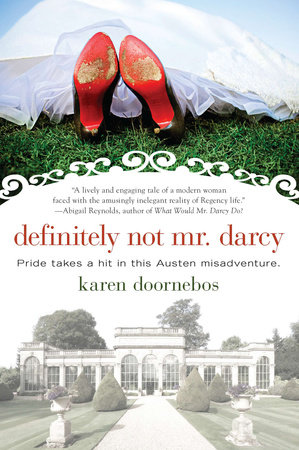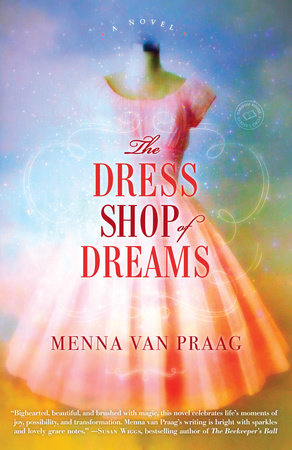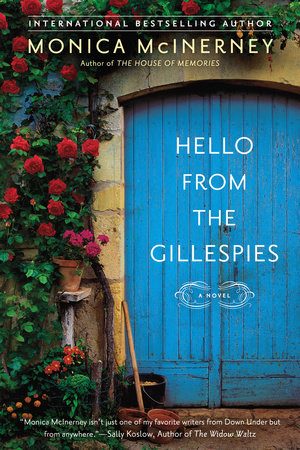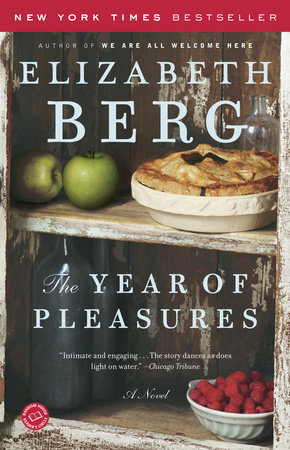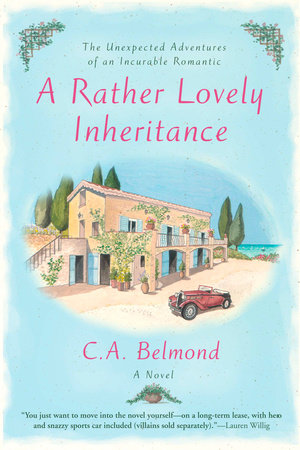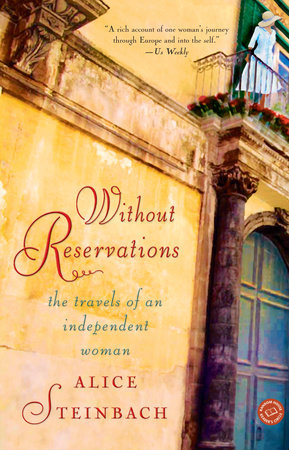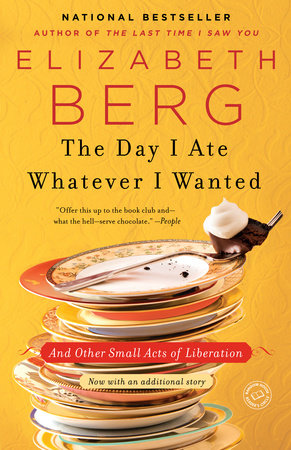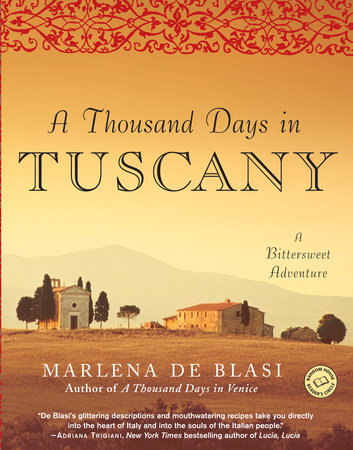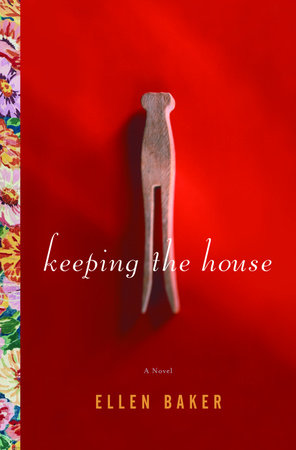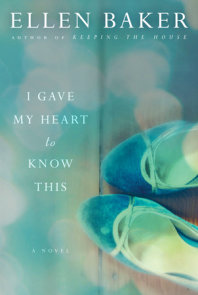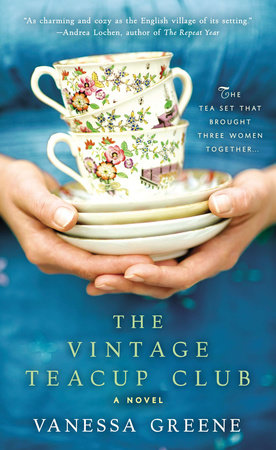Author Q&A
A Conversation with Ellen Baker
Random House Reader’s Circle: How long did it take you to write Keeping the House? What kind of research did you do for it, and did it take you anywhere unexpected?
Ellen Baker: I started writing about the Mickelson family in 1996, and worked off and on for about seven years on a manuscript that dealt with their summer of 1919 in Stone Harbor, after Jack had just returned from the First World War. I finally decided that I needed to start something new, and began what would become Keeping the House in early 2003. I worked on it solidly for three years. I had researched World War I extensively when I was in grad school in 1998—2000, and World War II when I was working as a museum curator after that. But that really just gave me the overarching background for the story. As I wrote, I would discover details I needed and then seek them out. I traveled to North Central Wisconsin and La Crosse, and spent many hours in various libraries and archives, reading newspapers and magazines and city directories. I walked through the old Washington Avenue depot in Minneapolis, through a stand of virgin pine near Antigo, Wisconsin, and through the preserved World War II—era barracks at Fort McCoy. I interviewed several World War II veterans and even one woman who had met her husband at a dance in La Crosse. I pored over old cookbooks to plan Dolly’s meals, and the War Department’s 1917 advice on war gardens to plan Wilma’s garden. I researched girdles and corsets, Packards and Chryslers. I can’t say that any of this was really expected–I just let the story tell me where to go. I’m always fascinated by what I find, and I enjoy the challenge of weaving the details into the story.
RHRC: Speaking of research and history, readers love the excerpts that you weave throughout the book from vintage magazines, such as old issues of Ladies’ Home Journal and Good Housekeeping. Which piece of advice surprised or intrigued you the most? Do you find any of the tips useful or relevant to today’s modern woman?
EB: My favorite piece of advice is from the 1940 book Popular Home Decoration: “A house, exactly like a dog, must be loved before it will show the best side of its nature.” I was so happy to find that because it seemed to go right in line with what Dolly was thinking about the Mickelson house and the bungalow. And I thought that a few of the lines from the 1939 Good Housekeeping Marriage Book could still be relevant today, such as the advice to really try to understand one’s mate, and the idea that “all kinds of wonderful qualities needed in marriage may seem to be conspicuous in oneself chiefly by their absence, but one can always play for time.” I don’t know of anyone who hasn’t been disappointed by their own performance in a relationship from time to time, and I like that idea of waiting out one’s own bad behavior without letting the commitment waver. Some of the advice obviously seems quaint–like the lines from the cookbooks–and some of it strikes me as purely awful, particularly the stuff from the 1949 Look magazine article titled “The Other Woman Is Often the Creation of the Wife,” and the lines from the “Making Marriage Work” column. But all of the excerpts work to set up the context that Dolly is living in, the messages she’s getting from society, and why she feels bad about not living up to these expectations. In my mind, the best thing the modern woman can take from all these tips is to be conscious of the way the messages and advice one gets from today’s media might be influencing one’s perceptions of oneself. I know I for one can’t live up to what many current women’s magazines seem to expect of women.
RHRC: You’ve created a fascinating cast of characters in Keeping the House, all with such distinct personalities. Do you have a favorite? And if so, why?
EB: I love all the characters in Keeping the House, but if I had to pick a favorite, I think it would be Harry. He’s smart, humble, a bit wounded in his own quiet way. He’s more selfless than any of the other characters, more altruistic, and more honest. And he tries to do his best for his mother, despite the fact that she never really notices him. The others are fun to eavesdrop on or visit, but he’s the only one I would ever want to live with.
RHRC: The conflict that Dolly feels between society’s traditional wifely expectations and her own interests and passions is something that many women still struggle with today. Do you think things have really changed? Or that they need to? And did writing about Dolly’s situation help you resolve any conflict in your own married life?
EB: I think this is such a complicated issue; maybe that’s why I found it so fascinating to write about Dolly and Wilma and all the men and women in Keeping the House who are dealing with such questions in their own lives. On the one hand, there is such value in the work of keeping the house: parenting, cooking, providing a safe environment in which children can thrive, building communities. There’s something about a well-kept, comfortable home that seems to suggest order and safety in a chaotic world, and those of us who are fortunate enough to have this are truly blessed. On the other hand, I think there is danger when this work of housekeeping is gendered–considered “feminine” and thus devalued. It seems to me that, for many women today, these important housekeeping tasks are piled on top of the need and desire to excel in a career, while men are more typically able to prioritize their career above the work of home and family without much angst over the issue. Maybe because women still hear so many constant messages about how that it’s their job to take care of nutritious meals, clean and organize the house, nurture the kids. The real task, I think, is for communities and families to equalize the value of work both inside and outside the home and to realize that the task of keeping the house must be shared by men and women if we are to have true equality between the sexes, not to mention thrive as a society.
For me, I was appalled when I got married and people asked me why I wasn’t packing my husband’s lunch for him or why he occasionally had to wash the dishes or cook a meal. Even more strangely, I found myself taking on the responsibility of making sure he ate “colorful, well-balanced meals” (though I never went to the extremes that Dolly did with recording menus and responses). And I was working fifty hours a week. I was curious–and frustrated–to discover that I was wired to be a traditional wife, and that my husband seemed just as wired to be a traditional husband, despite that, if you asked us, both of us would say that our ideal was to be equal. I don’t think that issues in relationships are ever resolved, but they are always in the process of evolving, and with time hopefully comes the ability to interrogate and restructure one’s own unconscious expectations.
RHRC: Keeping the House is dedicated to your grandmothers. Did you use any of their own stories or experiences in writing this book?
EB: No, not directly. But they’ve both shaped my life and my thinking in significant ways.
I grew up hearing their stories. One, born in 1905, saw her farmer father killed by lightning when she was seven years old (and watched as his body was brought in from the field where he’d been working). She married young, had a child, divorced her first husband (he was never spoken of), and was a single mom for several years, working to support her daughter. She then married my grandpa, had two babies that died during the Depression (she later said she thought if she’d just been able not to work so hard doing washing, they might have survived), and finally had my dad. She was an amazing cook and housekeeper and needlewoman who also worked outside the home to earn money to send her kids to school so they could have a better life than she had (she had only an eighth-grade education), a tough and often bitter woman who embodied many contradictions. She was widowed in 1964, lived until the age of 100, and often, at the end, talked about the happiest days of her life: when she was a child on the farm and her father was still alive. Talk about loss changing and shaping the course of a life.
My other grandma was born in 1911 in Brooklyn, the daughter of Norwegian immigrants. She earned a Master’s Degree from Radcliffe College in 1935 and was married a couple of months later. My grandparents then moved to Minneapolis, Minnesota, where my grandfather soon became the president of a small college. Over the next thirty years or so, my grandma raised five daughters and worked in support of her husband’s career, editing and typing his book manuscripts and hosting dinner parties for his colleagues, though she hated to cook and loved to teach and write. Hearing the stories of their lives was firsthand evidence that women typically had to choose between family and career, while men were easily able to have both. So I think these stories steered me in the direction of being interested in ideas about gender, in what society typically expects from women and from men, and started me down the path of studying history through the lens of gender.
RHRC: This is your first book; tell us a bit about your writing process and the journey to publication. Did you always want to be a writer?
EB: Yes, I did always want to be a writer. I guess I’d say I’ve been one my whole life. Since about the age of seven, I wrote something every day: journal entries, poetry, stories–I started my first novel when I was thirteen. It was just something I did–I always had a pen in my hand to record some secret thought. (I wrote a Jane Eyre-esque romance in my ninth-grade algebra notebook, for example, when I should have been paying attention to the teacher at the blackboard and her equations.) For many years I really didn’t consider writing as a viable career option–it was far too personal a part of me to share with the world. But over time I discovered that there was nothing that fulfilled me the way that writing did. And once I decided not to be afraid of what the results might be, and put my whole self into not just writing for the sake of writing but writing something that other people might actually want to read, I began really studying the craft for the first time, reading more than ever, and writing and rewriting. Three years later I had a wonderful agent in New York and a book deal with Random House. Those were probably the hardest three years of work of my life, and they were absolutely the best and most rewarding, too.
RHRC: What other books would you recommend for those who enjoyed Keeping the House? What are some of your favorite novels?
EB: Some fantastic novels which I would recommend to people who enjoyed Keeping the House are The Cape Ann by Faith Sullivan, The Gravedigger’s Daughter by Joyce Carol Oates, When the Elephants Dance by Tess Uriza Holthe, Fried Green Tomatoes at the Whistle Stop CafŽ by Fannie Flagg, Cane River by Lalita Tademy, The Family Tree by Carole Cadwalladr, and Middlesex by Jeffrey Eugenides. Some of my other favorites include Absalom, Absalom! and As I Lay Dying by William Faulkner, Winesburg, Ohio by Sherwood Anderson, Goodbye to Some by Gordon Forbes, The Solace of Leaving Early by Haven Kimmel, First Light by Charles Baxter, The Whistling Season by Ivan Doig, Wonder When You’ll Miss Me by Amanda Davis, and The History of Love by Nicole Krauss.
RHRC: What’s next for you? Can we expect a book that’s similar to Keeping the House, or something completely different?
EB: There are definitely certain themes that I’ll come back to, just because they fascinate me: war, memory, identity, history, love, family secrets. But the setting and characters will be different. None of the women in my next book are housewives; they’re farmers, artists, and World War II shipbuilders. So they’re dealing with problems that are quite different from Dolly’s and Wilma’s in Keeping the House.



